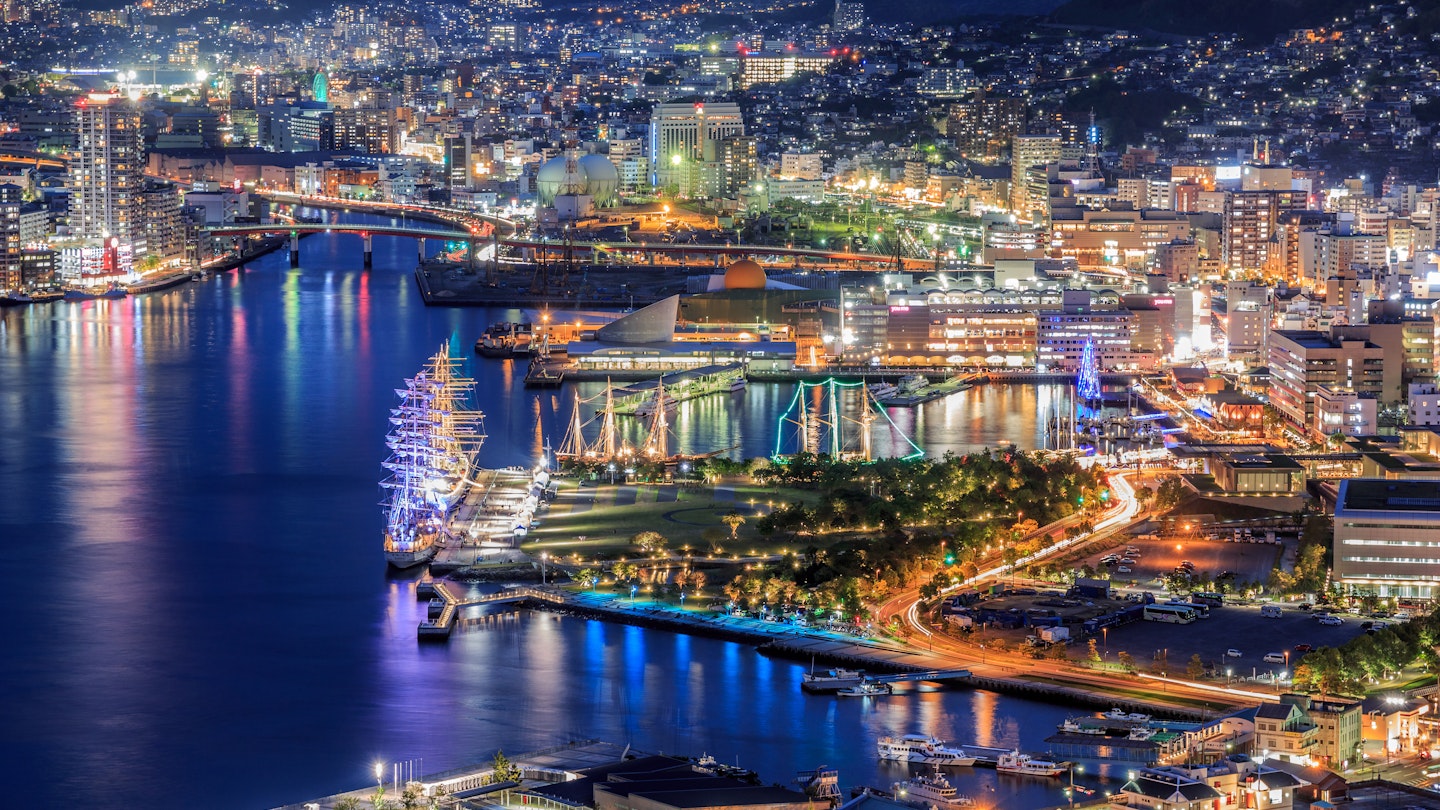Explore Nagasaki: A Two-Day Travel Guide
There is no denying that Nagasaki’s intense and turbulent history has forever marked it as a distinct destination. However, this vibrant city today presents an opportunity to learn not only about its painful past but also to embrace its diverse charm and modern energy, which looks toward the future.
Day One: Morning
Start your adventure right by grabbing some deliciously soft and springy pork dumplings from the Shianbashi branch of Butamon Momotaro, a family-run Nagasaki institution. Established in 1960, it has grown to encompass five popular locations across the city.
Afterward, hop on a tram bound for Matsuyama-Machi, allowing you to relax and enjoy the sights as you head towards the Nagasaki Atomic Bomb Museum. This essential experience offers a gripping account of the city’s devastation from the bombing on 9 August 1945, alongside the subsequent aftermath.
Displays include artefacts from that time, such as twisted shrapnel, crumbled rubble, photographs, and a clock frozen at 11:02, the exact moment of the bombing. Video exhibitions showcase moving first-hand accounts from survivors, adding to the educational experience.
Adjacent to the museum lies the Nagasaki National Peace Memorial Hall for the Atomic Bomb Victims, which features an upper level with a sculptured water basin and two underground levels housing 12 glass pillars with books listing the names of the deceased. Visitors are encouraged to leave messages of peace.
Afterwards, take a short stroll to Sakanaya, a restaurant specializing in kaisen-don (rice bowls topped with fresh sashimi) offering delectable set lunches including cuts of hamachi and boniti, as well as karaage (succulent Japanese fried chicken).
Day One: Afternoon
After lunch, stretch your legs with a walk through Peace Park to view the impressive 10-tonne bronze Nagasaki Peace Statue, designed by Kitamura Seibō in 1955. This serene spot features a Fountain of Peace shaped like a dove and a sculpture garden, making it an ideal location to reflect.
Next, take a five-minute walk to the Atomic Bomb Hypocentre Park, where a solitary black-stone column marks the exact point of the bombing – a chilling and unforgettable experience.
If you’re still in a contemplative mood, cross the river to Fuchi-jinja, a Shinto shrine atop Inasa-yama, the impressive 333-metre high mountain in Western Nagasaki.
Day One: Evening
As daylight fades, taking the famous cable car to the peak of Inasa-yama provides an exceptional panoramic view of the city. Here, the captivating lights of the urban landscape contrast beautifully with the shimmering waters of the harbour.
After descending, consider visiting Onsen Fukunoyu, located on the mountain where visitors can unwind in traditional wet baths and rejuvenate in the ganbanyoku hot stone spa.
Finally, cap off your evening with a taxi ride to Shippoku Hamakatsu to indulge in shippoku-ryōri, Nagasaki’s prestigious banquet-style dinner featuring an array of delicious courses served on a large round table.
Day Two: Morning
Approximately 20 kilometres off the coast of Nagasaki lies Hashima Island (or Gunkanjima), a former coal-mining facility that once housed thousands, now stands abandoned and serves as an eerie ghost town.
In operation since the 1890s, Hashima was forsaken in 1974 following depleted coal reserves. Scheduled cruises to the island from April to October offer two departures daily through Gunkanjima Concierge. Advance booking is essential, so be sure to plan ahead on their website.
Before you set off, enjoy a hearty breakfast buffet at Hotel Belleview. Their selection includes local ingredients and Japanese dishes like egg rolls and pork katsu, alongside Western options. Remember to pack sunscreen and hydrate, and don’t forget to use the bathroom before departing!
While many parts of the island remain unsafe, guided tours operate along a secured walkway, offering astounding views of the ruins and informative audio guides.
Day Two: Afternoon
Upon returning to the terminal, satisfy your hunger at Japan’s oldest Chinatown, just a five-minute stroll away. Explore an array of restaurants and food stalls lining the streets, and be sure to visit Kairaku-en to delight in champon, a signature Nagasaki noodle dish with pork, squid, and fresh vegetables.
If you still have room for dessert, stop by Fukusaya to experience their renowned yellow castella cake. Next, make your way to Dutch Slopes to appreciate meticulously restored architecture reflecting Japan’s early engagement with the West. Continue onward to Glover Garden, taking the moving walkways to explore the area.
Don’t miss the Mitsubishi No 2 Dock building, which offers breathtaking views of the harbour. Historic sites such as the Walker, Ringer, Alt, and Glover Houses are also worthwhile. Exit the garden through the Nagasaki Traditional Performing Arts Museum, and view the displays celebrating the vibrant Kunchi Matsuri festival.
As you journey back toward the harbour, be sure to visit Dejima, the artificial island created as the exclusive trading post for foreigners during Japan’s era of isolation. It showcases several reconstructed buildings from that period, where you can explore the Dejima Museum.
Day Two: Evening
To unwind, grab a seat outside at Delicious Restaurant Attic at Dejima Wharf, or enjoy a specialty coffee adorned with intricate latte art.
For dinner, visit Mugal Mahal, a hidden gem nearby known for its incredible Indian cuisine. Their set meals feature aromatic curries, fresh salads, steaming pilau rice, juicy barbequed chicken, and freshly baked naan breads.
Conclude your day with a visit to Bar IWI, a cozy local bar serving affordable drinks and open until 3 am, providing a perfect ambiance for mingling with both locals and tourists.




